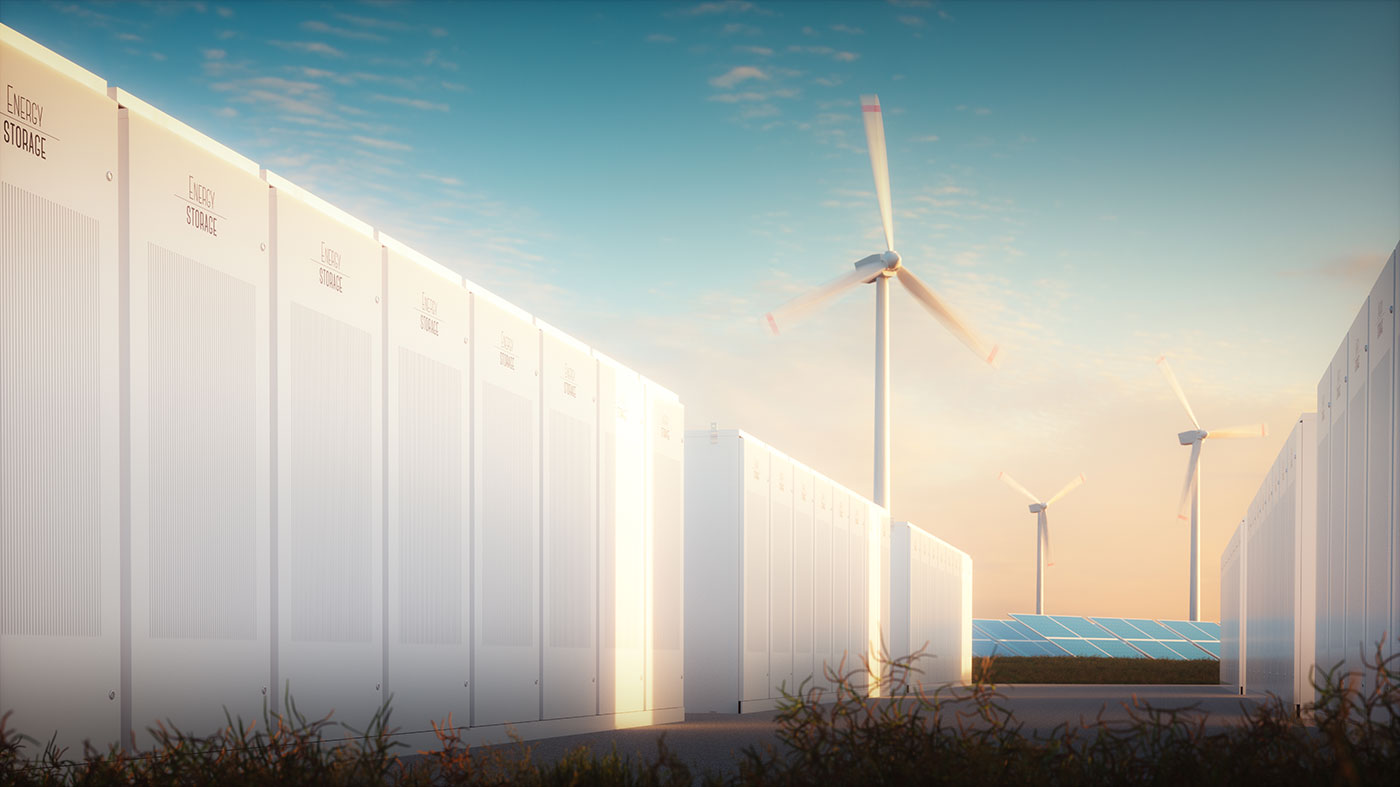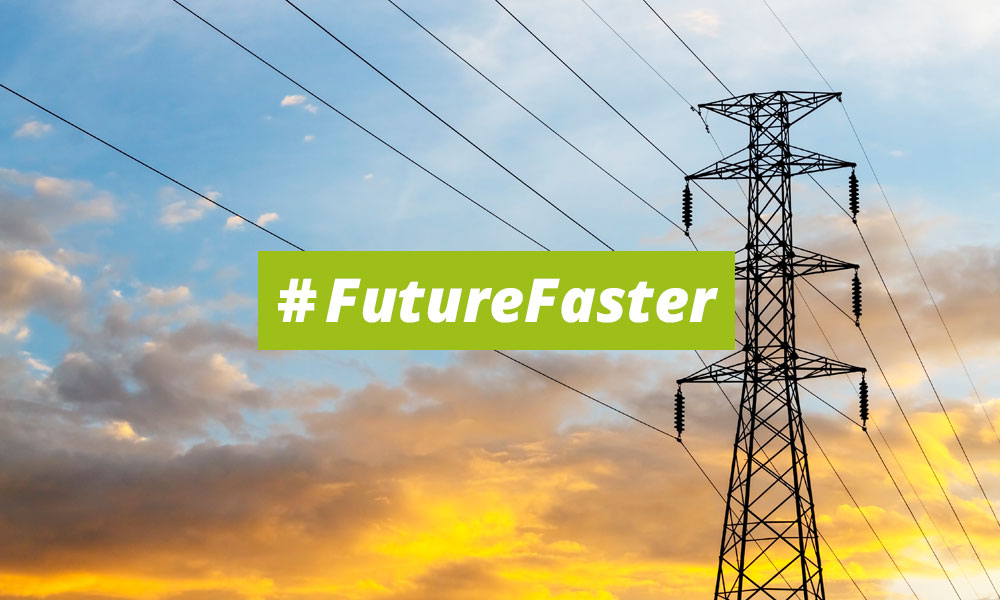Zero-carbon power: 5 signs that a 100% clean power system is already in sight
Nigel Topping, CEO of the We Mean Business coalition
To find out more about We Mean Business and our work on clean power systems, please fill in the form at the bottom of this article and a member of our team will be in touch.
The zero-carbon power system is coming.
By 2050 at the latest, the way electricity is produced will be completely transformed. The electricity we use to grow our businesses, light and heat our homes, and travel from place to place will be 100% renewable, affordable and reliable. It will also be free from any dependence on polluting fossil fuels.
A near-total renewable power system by mid-century is said to be vital in the latest report from the IPCC if the world is to have any chance of limiting global warming to 1.5°C. While the urgency for the shift to clean power has never been greater, the good news is that it is both technically and economically possible and good for business.
More and more companies are embracing this shift and already reaping the benefits of reduced costs and improved security of supply. They are also better positioning themselves for future growth and protecting against stranded assets.
Here are five key factors driving the transition to 100% renewable electricity and helping to accelerate its rapid rollout.
Companies want clean energy and zero-carbon power
A growing wave of corporate customers are demanding clean energy as the best and most affordable way to power business growth and cut their own carbon emissions.
To date, over 160 of the world’s most influential companies have committed to source 100% renewable electricity through RE100, led by The Climate Group, in partnership with CDP. RE100 members – which include the likes of Walmart and Hewlett Packard – are now creating demand of over 184 TWh of renewable electricity annually, more than enough to power Argentina and Portugal combined. A growing number have already hit their 100% target ahead of schedule, including Google and Autodesk.
This push from corporates to switch to clean energy even took center stage during this year’s Super Bowl advert break, with AB InBev’s Budweiser highlighting its commitment to renewable power to the sound of Bob Dylan’s ‘Blowin’ in the wind’.
These businesses are also providing a new source of finance for a faster roll out of renewable energy around the world, by investing over US$94 billion to reach their 100% goals.
And this push is being noticed by forward-looking utilities, which are investing to capture the demand growth.
Utilities are switching
Utilities around the world are investing heavily in new renewables, as the most effective way to meet growing consumer demand for clean energy.
Almost 20 GW of new renewable energy capacity was added in the US in 2018, including 11.6 GW of solar and 7.5 GW of wind, according to Bloomberg NEF. And in 2017, global solar capacity grew faster than all fossil fuels combined, including coal, oil and gas-fired power stations, for the first time ever.

The transition to renewable energy is helping to create the zero-carbon future faster.
Unsubsidized renewables were also the cheapest source of electricity in 30 countries in 2017, with renewables predicted to be consistently more cost effective than fossil fuels globally by 2020, according to research by the World Economic Forum.
The utilities enabling this shift are making sure their own emissions are falling in line with what’s required by the Paris Agreement. Over 40 power utilities companies have committed to bold climate action through the We Mean Business coalition’s Take Action campaign. This includes over 20 companies that have committed to science-based targets, such as Europe’s Ørsted, NRG Energy in the US and CLP Group in China.
Also in the US, one of America’s largest utilities, Xcel Energy, recently committed to zero-carbon power by 2050, as part of a sweeping new “clean energy vision” announced in 2018.
Policy powers up
Governments around the world are harnessing the opportunity of the rapid shift to renewables, as a driver of economic growth and jobs, and to ensure safe and reliable access to energy while protecting health.
In terms of employment, renewable energy is going from strength to strength. The number of people employed globally in the renewable energy sector surpassed 10 million in 2017, which was a 5% increase on the previous year, according to IRENA. Though care has to be taken to ensure a just transition for workers affected by the transition away from coal-fired power.
There are already seven countries at, or very, near to using 100% renewable power grids, including Costa Rica and Norway. While more countries are setting out pathways to become 100% renewable by 2050, such as Spain.
Certain countries are aggressively ramping up their commitment to renewable power, such as India, which has increased its 2022 renewable energy target by 28 percent to 227 GW, from 175 GW previously. This would be more than three times the current 70 GW.
In terms of phasing out coal, nearly 30 countries, including the UK, Canada and Mexico are part of the Powering Past Coal Alliance, committing to phase out existing coal-fired power stations and place a moratorium on new ones.
At the city level, over 100 cities around the world are now getting at least 70% of their electricity from renewable sources such as hydro, geothermal, solar and wind, according to CDP data.
In the United States alone, more than 80 cities, five counties, and two states have committed to 100% renewables. Six of those cities have already hit the target, according to the Sierra Club. And last year, California governor Jerry Brown signed a bill to eliminate fossil fuels from the state’s electric grid by 2045.
Technological revolution
Rapid technological innovation is helping to make this all possible, by allowing the full integration of renewables into established and developing grids, and unlocking new investment opportunities. It’s a trend that’s set to accelerate as the technology continues to improve.
For example, the energy storage market is predicted to double six times by 2030, with more than $100 billion being invested across the globe in the next 15 years, according to a Bloomberg New Energy Finance report.
The battery revolution, one of the key enabling technologies paving the way for the transition to fully renewable grids, is already re-writing the rules for power producers. Tesla is working with PG&E on a massive 1.1 GWh battery system in California, after the company’s founder Elon Musk famously won his bet to install the world’s biggest battery in South Australia within 100 days, which is now cutting costs and increasing reliability for the grid.
Meanwhile, even the connectors delivering power are going further and becoming more efficient than ever before. Siemens is supplying the transformers for a record-breaking high-voltage, direct current line in China, with a length of 3,284 kilometers and a transmission capacity of 12 GW.
Investment shuns fossil fuels
Meanwhile, finance is increasingly being directed away from fossil fuel investment, particularly coal, and towards low-carbon alternatives.
For example, last year European financial services company Allianz withdrew from insuring single coal-fired power plants and coal mines in operation or planning. While Swiss Re is no longer providing re/insurance to businesses with more than 30 percent exposure to thermal coal.
The funds committed to fossil fuel divestment now total more than $6tn (£4.6tn), with almost 1,000 institutional investors having made the pledge, according to a new report.
A group of almost 400 of the world’s leading investors, controlling over $30 trillion in assets, are pushing for ambitious climate action through the Climate Action 100+ campaign. The group are promoting many of the world’s most heavy emitting companies to align their business strategies with the goals of the Paris Agreement, including Shell and BP.
And a growing number of leading pension funds are divesting from fossil fuels, including the New York City pension fund.
All together, these five key factors are helping the global economy to rapidly transition to a future powered by 100% renewable electricity. As more and more policy makers and businesses embrace this shift, it will help to accelerate the power system away from polluting energy and towards the future faster.
Take Action
- Find out how your company can Take Action >
- Join the conversation using #FutureFaster >
- How to harness the disruptive innovation of climate action
Further Reading
- Five companies already doing what IPCC report says is needed
- COP24 set the rules of the road; now we all have to drive
- Climate and the Just Transition
Speak to someone from our team
To find out more about We Mean Business and our work on clean power systems, please fill in this form and a member of our team will be in touch.

